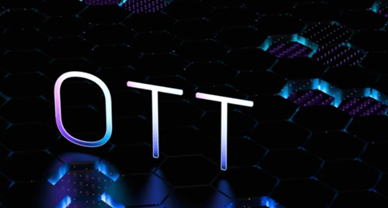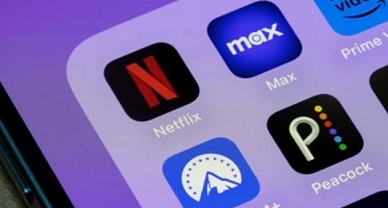Censorship and Ott Platforms: The Legal Fine Line in India
Today is the night for Netflix and Chill! India has become quite familiar with such phrases in recent years; the idea of watching anything you want, anywhere, at any time, is no longer dreamy but a reality, all thanks to OTT (Over-The-Top) platforms. Platforms like Amazon Prime Video, Disney Hotstar, Netflix Sony Liv have become part of Indian households[1]. These platforms changed the way of living, or we say the change in consumption of entertainment in India. These digital platforms offer a huge variety of content across genres and languages in just a click. Contrary to traditional television, which is restricted by time slots and regulatory controls, the OTT platforms offer on-demand streaming, thus giving the viewers the freedom to choose what they want and when they want it. The availability of the streaming services makes them extremely popular, particularly among the youngsters and the urban population.
While traditional television was limited to slots and choices, it had regulatory control, and that is not the case with OTT platforms. Traditional TV channels and films are governed by strict guidelines and the Central Board of Film Certification (CBFC), OTT platforms initially enjoyed significant freedom to produce bold, diverse, and experimental content. However, this freedom has sparked debates about the need for greater oversight, as content on these platforms has occasionally led to controversies involving religious sentiments, obscenity, and political criticism[2].
This issue leads us to a stick-of-balance, to ensure that the right of speech and freedom does not get restricted but also does not harm India’s cultural sensitivities and also adheres to legal regulations. Striking this balance is not just a challenge for the government but also for creators and streaming platforms themselves. In India, the regulation of film certification comes under The Cinematograph Act of 1952[3], This act laid the foundation for the film certification system in the country. By virtue of this act, the Central Bureau of Film Certification (CBFC) was established to oversee the approval and censorship of films before they can be screened for the public at large[4]. Such laws can restrict the freedom of speech and expression guaranteed under the Constitution of India. [5]Everyone has the freedom to express themselves, including the right to hold opinions without interference and the right to seek and receive information and ideas through the media, according to Article 19 of the Constitution[6].
This blog will focus on the regulatory side of OTT platforms and their legal troubles, apart from emphasizing how creative freedom and the right to express are two ends on the slippery floor when one errs on the side of innovation. Furthermore, the blog will deliberate on the Indian legal system’s stance regarding these issues and also discuss the way, in the realm of Digital entertainment regulation, a country, which is both culturally diverse and legally vibrant, may proceed.
EVOLUTION OF CENSORSHIP CONTENT IN INDIA
One of the most debated topics in India is censorship, with the main focus on digital media. India is a country with many different cultural backgrounds, and the problem of giving people the freedom to express themselves and also keeping the country safe from the content that is going to be offensive to the public is a situation. Neecha Nagar (1946) was one of the first films to cause such discussions in India. However, the movie was able to bag a number of national and international awards. This was the earliest of example of freedom of creative work and cultural diversity of India. It arouses a lot of questions about the complexity of the authentic interrelationship between censorship and free expression in India. The definition of censorship in the Merriam-Webster dictionary states that it is the deletion of speech as well as public communication or another piece of information that is considered undesirable, harmful, sensitive, or inconvenient. Censorship is the removal of the potential content through which society may resort to a transitory physical or perceptible change..[7]

The highest court of the land recognized the need to strike a balance between artistic freedom and social values in the K.A Abbas v. Union of India[8] case – a case that became a breakthrough in the ambiguity of the freedom of speech. K.A. Abbas was a filmmaker who contested the censorship of his film, A Tale of Four Cities, prior to its release under the Cinematograph Act of 1952 as he believed that the prior censorship, used by the state to crack down on free speech, violated the fundamental right to liberty of speech protected by Article 19(1)(a) of the Indian Constitution. The Supreme Court upheld the constitutionality of pre-censorship because it comes under reasonable restrictions under Article 19(2)[9]. However, the Court also emphasized that transparency and consistency must come to be in the process of censorship so that it cannot lead to arbitrary decisions. The judgment highlights how creative expression should go with societal norms and sensitivities.
LEGAL FRAMEWORK GOVERNING CENSORSHIP OF OTT PLATFORMS
The legal control of content on OTT platforms in India has changed greatly, especially in the past few years, as these platforms have skyrocketed in terms of popularity. OTT platforms differ from conventional media, as they started off in a comparatively unregulated environment, which made it possible for the creators to try new things without any boundaries. However, increasing controversies over content have prompted the government to establish clearer regulatory guidelines. OTT Platforms were used to follow this self-regulatory without any independent authority as the redressal form[10] ‘code of Best Practices for Online Curated Content Providers’ released by IAMAI (Internet and Mobile Association of India).
In India, the Information Technology (Greater Transparency in Intermediary Services, and Digital Media Ethics Code) Rules, 2020, enacted, come into force in 2021[11] Yet the regulations provide a framework for digital platforms that allow for the inclusion of OTT services, but they do the trick of ensuring accountability and maintaining creative freedom. The Constitution of a three-tier grievance redressal mechanism is one of the main changes introduced through these rules.[12]
Level 1: The OTT platforms themselves are expected to handle complaints and resolve issues directly.
Level 2: If a resolution isn’t satisfactory, an industry-led self-regulatory body steps in. This body must be composed of experts from the industry and led by a retired Supreme Court/High Court judge or a distinguished personality in the field.
Level 3: For unresolved matters or appeals, the MIB has set up an inter-departmental committee to take a final call.
Beyond this grievance redressal mechanism, the rules also came up with a strict code of ethics[13] OTT content is currently divided into categories based on such factors as age, the theme, and the tone of the content, and its intended audience. In the same vein, the categorization under the Cinematograph Act is done in the following manner: “U” (meant for all ages), UA 7+ (for ages 7 and up), U/A 13+ (for ages 13 and up), U/A 16+ (for ages 16 and up), and ‘A’ (for adults only, 18+). More so, OTT platforms will also have to impose restrictions and controls via parental control and so on for content with ratings such as U/A 13+ and above[14]
Essentially, the new IT Rule, 2021, intends to have OTT platforms come closer to traditional media in terms which are sought by the rules, as well as to add transparency to content and to make it more accessible to creatable audiences. But they’ve also sparked debates about creative freedom and censorship in the digital space.
High-profile cases that led to the formation of a regulatory body in the digital space of entertainment
The demand for regulation in India’s OTT sector has been a response to a history of high-profile controversies surrounding creative content. OTT platforms entered the Indian market with the promise of offering unrestricted, diverse, and bold content. One of the first significant cases was the 2021 series Tandav on Amazon Prime Video, which faced severe backlash for allegedly hurting religious sentiments[15]. The portrayal of Hindu deities in certain scenes that were politically engaged led to multiple FIRs, aggressive protests, and demands for boycotts. The controversy reached a point that creators even issued public apologies and made edits to the show, and after all this, the series got a green signal, this was the instance where the need for a regulatory body for censorship and OTT was felt.
Similarly, A Suitable Boy (2020) on Netflix created controversy over a kissing scene set in a temple. Certain groups of society accused the series of disrespecting religious sanctity, leading to calls for stricter oversight of OTT content[16]. Cases like these highlighted the absence of pre-release regulatory checks, which are mandatory for films and TV shows. This perceived regulatory gap fueled demands for government intervention, culminating in the Information Technology (Intermediary Guidelines and Digital Media Ethics Code) Rules, 2021. Another notable case is that of Sacred Games (2018), one of Netflix’s flagship Indian series. Its politically charged narrative and unfiltered language drew criticism from certain political and social groups. While the series was praised for its bold storytelling, it also became a focal point for debates on where to draw the line between creative freedom and offensive content[17]. The backlash around Sacred Games and similar titles underscored the urgent need for a formal regulatory framework for OTT platforms.
These controversies have not only brought regulatory attention to the OTT sector but have also shaped public discourse on the responsibilities of content creators. While OTT platforms still enjoy greater creative freedom compared to traditional media, these high-profile cases have demonstrated the need for a balanced approach one that protects free expression while addressing legitimate concerns of societal and cultural sensitivity.
FREE SPEECH V/S CULTURAL SENSITIVITY
The right to free speech is a great pillar of Indian democracy. According to Article 19(1)(a) of the Indian Constitution, every citizen of the country has been given this most valuable right to voice one’s thoughts and ideas. Nevertheless, it is saying that rights are not free from reasonable restrictions under the said Article, on account of the public order, decency, morality, or even the security of the state, or friendly relations with foreign States. Article 19(2) of the constitution allows the state to impose restrictions on freedom of speech and expression if it is determined that the content exhibited is contrary to morals, public order, or other factors[18]. If the government finds that the content is offensive to Indian sovereignty, the authority is empowered to block the content by issuing a notice under section 69 A of the IT Act[19] This seesaw between freedom and restriction becomes very difficult, particularly in the OTT platforms where it is the creative content that often conflicts with the cultural sensitivities.
OTT platforms in India are operating in a space where they have to cater to diverse audiences and avoid controversy. India’s pluralistic society, rich with different cultures, religions, and traditions, means that content that may be acceptable to one group may deeply offend another. For instance, in shows such as Tandav and A Suitable Boy, there were scenes flagged for allegedly hurting religious sentiments. In those cases, people wonder if the creators crossed the boundary between creative expression and cultural insensitivity[20]. Those debates often tend to go towards how far one can push free speech when it relates to religion, politics, or other societal values. The question of who should regulate this balance remains contested. Self-regulation by platforms offers a flexible approach, allowing creators to explore themes without external interference.
Nevertheless, government supervision, much apparent in the IT Rules in 2021, has added a more rigid structure. The critics argue that oversaturation of government control can lead to the dead end of artistic freedom and stimulate self-censorship, while supporters think that this is the way to (it) in a country with such long and painfully rooted sensitivities. India sure has a slightly different approach than the U.S. First Amendment that gives greater protection to free speech. This amendment further allows even more contentious or distasteful speech. Although the American apparatus places more weight on choosing power by the governors, India is more communitarian and is thus diverse in nature as well as is more culturally focused. This difference underscores how legal frameworks are shaped by societal values and histories. As India grapples with this balance, platforms and creators must tread carefully, navigating the fine line between free speech and cultural respect. The regulation of digital media and OTT platforms has had both positive and negative impacts. On one hand, it has imposed constraints on freedom of speech and creative expression for content creators. On the other hand, it has established a framework for proper oversight and moderation, similar to that in print and electronic media. Striking a balance between the freedom of speech and expression in online content and safeguarding the dignity, privacy, and rights of consumers is essential. Therefore, effective censorship of digital content must coexist with the preservation of the fundamental right to free speech and expression.
FUTURE OF OTT CENSORSHIP AND REGULATIONS – A WAY FORWARD
The rise of OTT platforms in India has brought both immense creative freedom and significant challenges. As these platforms push boundaries and explore bold narratives, they also face growing issues from authorities and audiences alike. Moving forward, the way OTT content is regulated needs to ensure that free speech is protected while respecting India’s cultural diversity. This requires an approach that avoids overly rigid rules and instead relies on thoughtful, human-centric solutions.
A possible way forward could involve creating an independent regulatory body, not for censorship, but for guidance and conflict resolution. Such a body could include representatives from the creative industry, cultural experts, and legal eagles to provide particular perspectives when disputes arise. Instead of penalising it, we can focus more on solving the disputes through mediation. OTT platforms also need to take the lead by investing in better content review processes—not just algorithm-based moderation but involving human experts who understand India’s complex cultural and social dynamics. This will help creators navigate sensitive issues more carefully without curbing their artistic vision. Encouraging creators to engage with communities or consultants familiar with regional sentiments during the content development phase can also prevent controversies before they arise.From the government’s side, it is essential to step back from reactive censorship and instead focus on clear, predictable guidelines that respect artistic freedom. Lawmakers should prioritize enabling free expression rather than responding to every controversy with bans or edits. This can be supported by public consultations to ensure policies reflect the voice of the people and not just the loudest critics.
Ultimately, the future of OTT regulation in India lies in building trust among all stakeholders. A fair, transparent, and collaborative process can encourage creators to explore bold themes responsibly while ensuring viewers’ cultural sentiments are respected. Striking this balance is not just about rules—it’s about understanding that creativity and sensitivity can coexist in a modern, pluralistic society like India.
Author:– Kritika Mishra, in case of any queries please contact/write back to us at support@ipandlegalfilings.com or IP & Legal Filing..
[1]Urvie Bhattacharya, “How Bollywood Beats Censorship: The Power of OTT Platforms” (The Blahcksheep) https://theblahcksheep.com/a/How%20Bollywood%20Beats%20Censorship%3A%20The%20Power%20of%20OTT%20Platforms
[2] Amna Kabeer, “Censorship and Regulation of OTT Platforms in India” (ApniLaw, December 3, 2024) https://www.apnilaw.com/media-and-entertainment/censorship-and-regulation-of-ott-platforms-in-india/
[3] Cinematograph Act of 1952
[4] Indian Journal of Law and Legal Research, “Censorship Laws on OTT Platforms” (IJLLR, May 3, 2022) https://www.ijllr.com/post/censorship-laws-on-ott-platforms
[6] Admin, “RIGHT TO FREEDOM OF SPEECH AND EXPRESSION VIS a VIS FREEDOM OF PRESS” (IILS Blog, October 30, 2023) https://www.iilsindia.com/blogs/right-freedom-speech-expression-vis-vis-freedom-press/
[7] Author lexlifeeditor, “CENSORSHIP OF WEB SERIES- PROS & CONS” (Lexlife India, July 28, 2021) https://lexlife.in/2021/07/28/censorship-of-web-series-pros-cons/#:~:text=It%20cannot%20be%20denied%20that,to%20be%20a%20viable%20option.
[8] [8] K.A. Abbas v. Union of India, (1970) 2 SCC 780
[9] Chelcie Agrawal, “Censorship of over the Top Platforms in India: A Comparative Study of India and Singapore” [2022] SSRN Electronic Journal
[10] ijalr, “CENSORSHIP OF OTT PLATFORMS: THE CONUNDRUM IN THE REGULATION AND THE WAY FORWARD by-Ishita Goyal – Ijalr” (Ijalr, November 13, 2022) https://ijalr.in/volume-2/issue-3-2/censorship-of-ott-platforms-the-conundrum-in-the-regulation-and-the-way-forward-by-ishita-goyal/
[11] [11] 6 Oommen Paul &KarthikeyanRagamalika, 2021, “Explained: Union govt‟s new IT rules for social media, OTT platforms & digital news”)
[12] Information Technology (Intermediary Guidelines and Digital Media Ethics Code) Rules,2021
[13] Information Technology (Intermediary Guidelines and Digital Media Ethics Code) Rules, Code of Ethics,
[14] Supra note, 10
[15] Editor_4, “[Tandav Web-Series Row]: SC Adjourns Hearing to August | SCC Blog” (SCC Times, July 10, 2023) https://www.scconline.com/blog/post/2023/07/06/tandav-web-series-row-sc-adjourns-hearing-to-august-legal-news/
[16] “Netflix Faces Boycott Calls in India over ‘A Suitable Boy’ Kissing Scene” CNN Business (November 25, 2020) <https://edition.cnn.com/2020/11/23/media/a-suitable-boy-netflix-india-intl-hnk/index.html>.
[17] Nyaaya, “Censorship on Online Platforms: Understanding India’s Self Regulation Model – Nyaaya” (Nyaaya, March 21, 2022) <https://nyaaya.org/guest-blog/censorship-on-online-platforms-understanding-indias-self-regulation-model/>.
[18] Seema Patil, “Censorship on OTT: Infringement of Right to Freedom of Speech and Expression or Not?,” vol Volume-I (2022)
[19] ANALYSING THE STATUS OF FREEDOM OF SPEECH VIS, A VIS NEW OTT RULES IN INDIA , Saundraya Giri , available at https://zenodo.org › record › files
[20] Supra note, 17

